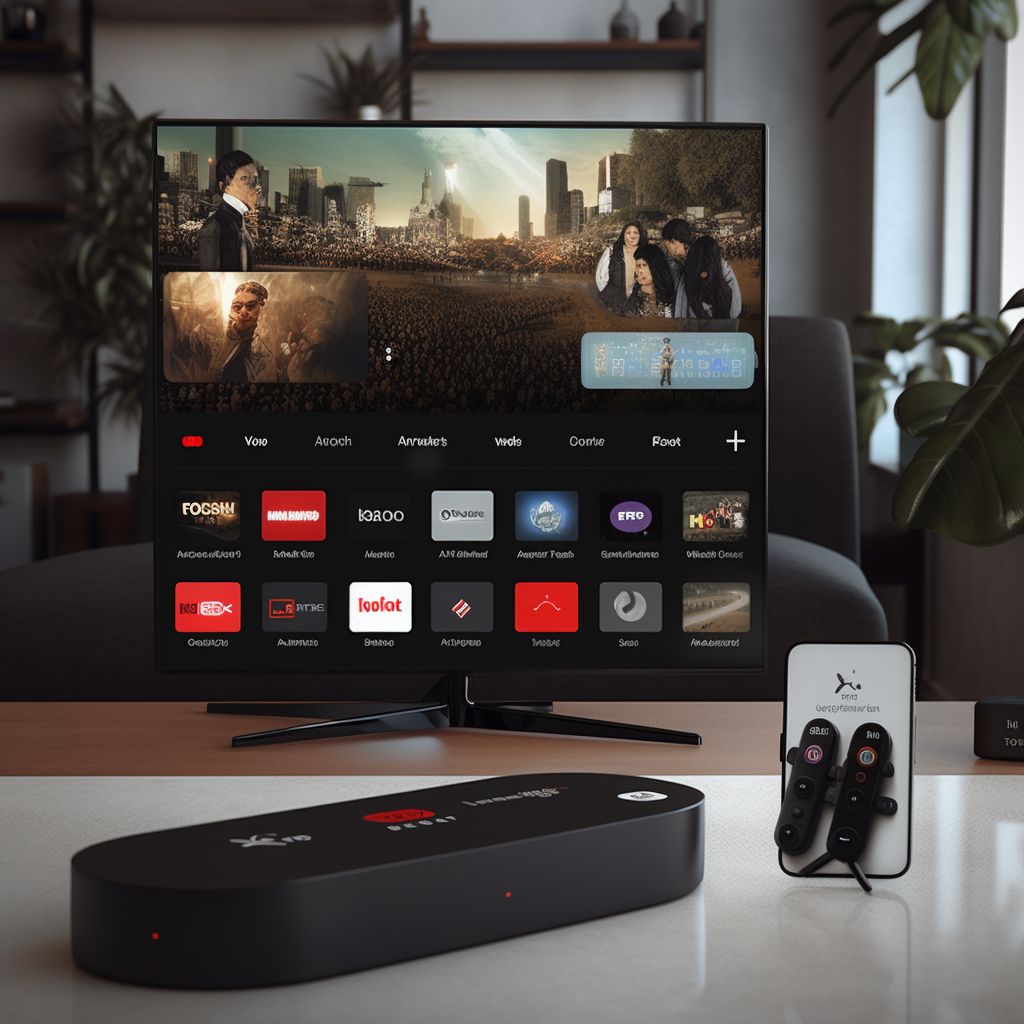Exploring the Best USA IPTV Services: A Complete Guide for 2024
Introduction
Did you know that over 82% of American households now prefer streaming services over traditional cable TV, with IPTV subscriptions growing by 34% in the last year alone? This remarkable shift in viewing habits has created a booming market for best USA IPTV services that offer flexibility, variety, and cost savings compared to conventional television packages. Whether you’re looking for entertainment options, sports coverage, or best IPTV for PPV events, understanding the current landscape can help you make informed decisions about your streaming future.

Key Features of Premium IPTV Services
When evaluating top-performing IPTV services in the United States, several essential features distinguish the exceptional from the mediocre:
- High-Definition Streaming: Look for services offering 720p, 1080p, and 4K streaming options
- Channel Variety: Premium providers typically offer 5,000+ channels across multiple genres
- Video-on-Demand (VOD): Extensive libraries with 10,000+ movies and TV shows
- Multi-device Compatibility: Support for Firestick, Android TV, smartphones, and computers
- EPG (Electronic Program Guide): Intuitive interface showing program schedules
- Customer Support: 24/7 assistance options via chat, email, or phone
- Connection Stability: Minimal buffering with 99%+ uptime guarantees
- Catch-up TV Options: Ability to watch missed shows from the past 7-14 days
Alternative options include free IPTV services, though these often provide fewer channels and less reliable connections compared to subscription-based offerings.
Timing: Subscription Periods and Costs
Understanding the typical subscription structure for IPTV services helps in making cost-effective decisions:
| Subscription Length | Average Cost Range | Value Assessment |
|---|---|---|
| 1 Month | $10-$20 | Good for testing services |
| 3 Months | $25-$50 | 15-20% savings over monthly |
| 6 Months | $50-$90 | 20-25% savings over monthly |
| 12 Months | $80-$150 | 30-40% savings over monthly |
Most premium services offer a “sweet spot” of value around the 6-month mark, where you receive substantial savings without committing to an entire year. The average household spends approximately $65 monthly on streaming services, making IPTV a potentially economical alternative at roughly $8-15 per month with annual plans.
Step-by-Step Guide to Setting Up Your IPTV Service
Step 1: Research and Select a Provider
Begin by evaluating services based on content offerings, reliability, and user reviews. Look specifically for providers with strong PPV event coverage if that’s important to your viewing habits. Check independent review sites and forums rather than relying solely on provider websites.
Step 2: Choose Your Subscription Plan
Select a plan that balances cost with commitment level. First-time users should consider starting with a 1-month plan to test service quality before investing in longer subscriptions. Many premium providers offer money-back guarantees for the first 24-48 hours.
Step 3: Select Your Device
Determine which device will be your primary streaming platform. Firestick and Android TV boxes typically provide the most seamless user experience, with dedicated apps optimized for big-screen viewing. Consider having a secondary device option for multiroom or on-the-go viewing.
Step 4: Download Required Software
Install the recommended application for your device, usually involving:
- For Firestick: Enable apps from unknown sources in Settings > Device
- For Android: Enable installation from unknown sources in Security settings
- For iOS: Use web player options or specialized apps available through alternative methods
Step 5: Activate Your Service
Enter your subscription credentials provided by your service. Most premium providers offer automatic setup links that simplify this process, reducing configuration to a few clicks rather than manual server entry.
Service Quality Information
High-quality IPTV services deliver significant technical advantages over lower-tier offerings:
- Stream Bitrate: Premium services offer 8-12 Mbps for HD channels compared to 3-5 Mbps on basic services
- Server Locations: Top providers maintain 20+ server locations globally for reduced latency
- Concurrent Connections: Most quality services allow 2-5 simultaneous streams per subscription
- Content Refresh Rate: Library updates occur daily with new VOD content added weekly
- Technical Requirements: Minimum 25 Mbps internet connection recommended for optimal performance
Alternatives to Standard IPTV Services

Several legitimate and potentially more stable alternatives exist:
- IPTV Reseller Programs: Discounted rates for longer commitments with additional customer support
- Legal Streaming Services Bundles: Combinations like YouTube TV + Sling + ESPN+ can provide similar content
- Free Trials: Many premium services offer 24-48 hour trials before purchase
- Multi-screen Packages: Family plans allowing 3-5 connections for slightly higher monthly fees
- Hybrid Solutions: Combining free IPTV apps with paid subscriptions for specialized content
Best Practices for IPTV Usage
For optimal IPTV experience, consider these recommended practices:
- Use a wired ethernet connection whenever possible instead of Wi-Fi
- Invest in a VPN service to enhance privacy and potentially improve connection stability
- Regularly clear cache on your streaming devices to prevent performance issues
- Schedule automatic updates during off-hours to avoid interruptions
- Consider dedicated streaming devices rather than using smart TV built-in apps
Common Issues to Avoid
Many IPTV users encounter these preventable problems:
- Oversubscribed Services: Providers with too many users sharing limited server capacity
- Unsecured Connections: Failing to use VPN protection when accessing content
- Device Limitations: Using underpowered hardware that can’t handle HD streams
- Unreliable Providers: Services with short operating histories or suspiciously low pricing
- Multiple Simultaneous Streams: Exceeding allowed device limits causing account restrictions
Storage and Backup Options
Consider these approaches to maximize your IPTV experience:
- Record important content using third-party DVR applications compatible with IPTV feeds
- Create favorites lists organized by category for quicker access to preferred channels
- Maintain backup subscription details in secure password managers
- Consider cloud storage options for recorded content to save local device space
- Keep alternative service options researched for quick switching if needed
Conclusion
The landscape of best USA IPTV services continues to evolve rapidly, offering unprecedented entertainment options at competitive prices. By understanding the key features, subscription models, and best practices outlined in this guide, you can make informed decisions about your streaming setup. The flexibility and extensive content libraries make IPTV an attractive alternative to traditional cable packages for many households, particularly those interested in specialized content like PPV events and international programming.
FAQs
Q: Is IPTV legal in the United States?
A: IPTV technology itself is legal, but services must have proper licensing agreements with content providers to distribute their programming legally. Many services operate in regulatory gray areas, so research is essential.
Q: What internet speed do I need for smooth IPTV performance?
A: For HD content, a minimum of 25 Mbps is recommended, while 4K content streaming may require 50+ Mbps for buffer-free viewing.
Q: Can I watch local channels through IPTV services?
A: Many premium services offer local channel packages for major US metropolitan areas, though coverage varies by provider and region.
Q: How do PPV events work with IPTV services?
A: Unlike traditional PPV where you pay per event, most IPTV services include PPV events as part of their subscription package at no additional cost.
Q: What’s the difference between IPTV and regular streaming services like Netflix?
A: IPTV typically focuses on live TV channel streaming and resembles traditional cable packages, while services like Netflix offer on-demand content without live programming.

